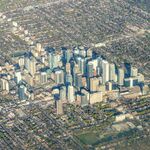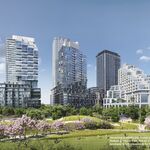INTz
Active Member
This article has a nice picture of the LRT track (https://blog.metrolinx.com/2022/04/...starting-at-maintenance-and-storage-facility/) which I assume is the same for the FWLRT. I find it really different from regular track I've seen. There is a rubber lining which seems to be for reducing vibration and an unexpectedly thin vertical part of the rail which I assume is because it is embedded in concrete and does not require the same support. There is also a U shaped trough which I am stumped as to what is is for. Can anyone share what this type of rail is called and the design decisions behind it? A simple attempt to search on google did not come up with anything useful.
Edit: looks like this is called a grooved rail

Edit: looks like this is called a grooved rail
Last edited:







